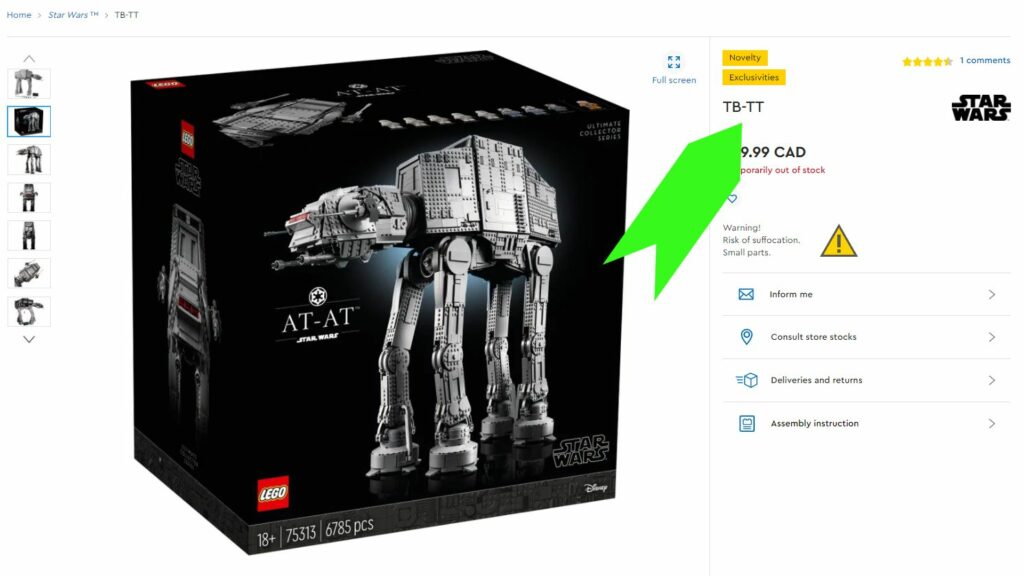It was only a matter of time before the Internet found another way to get itself excited, and this time it’s the new 75313 AT-AT that’s getting people worked up for the wrong reasons.
Just like the confusion and hype that rose up from the LEGO Star Wars collecting community when collectors noticed that some boxes of 75305 Darth Vader helmet had Dark Vador printed on them, the new 75313 AT-AT is showing up in North America labeled as TB-TT on one of its panels.

Spreading across the internet like the meme* that it is, is a growing number of posts by people expressing confusion/dismay and/or excitement that they have found a misprint/rare variant.
It’s not, it is just All Terrain Armored Transport in another language – French to be precise and in this case, it is for the French-speaking population of Quebec, in Canada. A quick visit to the French-Canadian version of the set’s product page on LEGO.com will confirm that this is a legitimate translation of the Imperial walker’s full and proper title.

For those who are curious, TB-TT is an acronym for Transport Blindé Tout Terrain. If you don’t believe LEGO.com or our research then try using the Google translation service to see for yourself.

Following the focus that The Razor Crest received when it fell foul of a trademark battle last year, many fans have started to take note of what is printed on the boxes that their sets come in and while some have recognized the different text, others haven’t caught on that North American boxes include English/Spanish/French wording to cover the main language groups of the continent.
Hopefully this explanation will get as much traffic as the TB-TT posts, and eventually, the furor will die down.
* by which we mean definition first coined by Richard Dawkins in his 1976 book The Selfish Gene as an attempt to explain how ideas replicate, mutate, and evolve (memetics), and not an image of a toddler with a fistful of sand.


I wonder why French Canadians get TB-TT while French Europeans retain AT-AT, at least on LEGO’s website?
I imagine it has to do with French Canadian legislation on dual languages being stricter that EU/French requirements. That’s just a guess though.